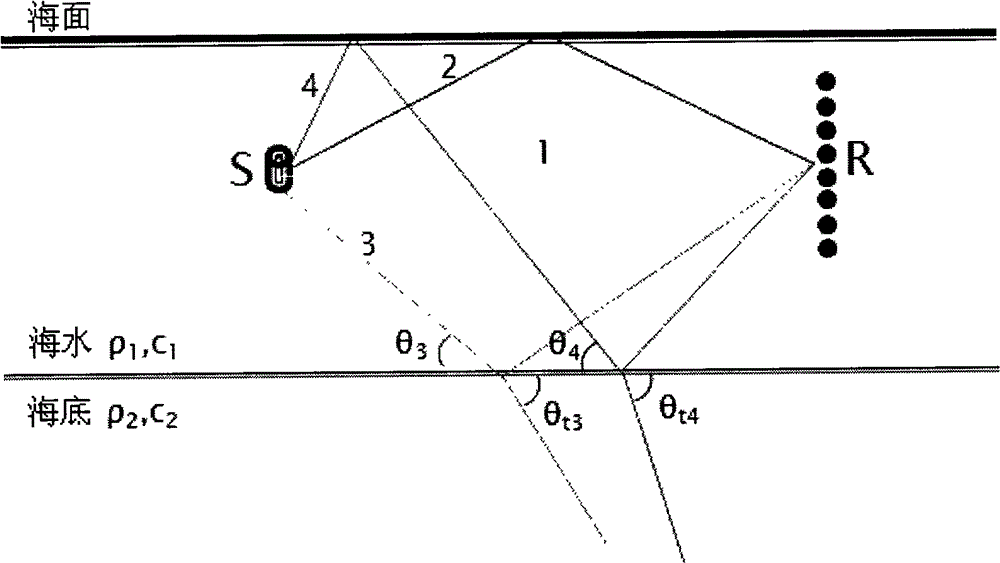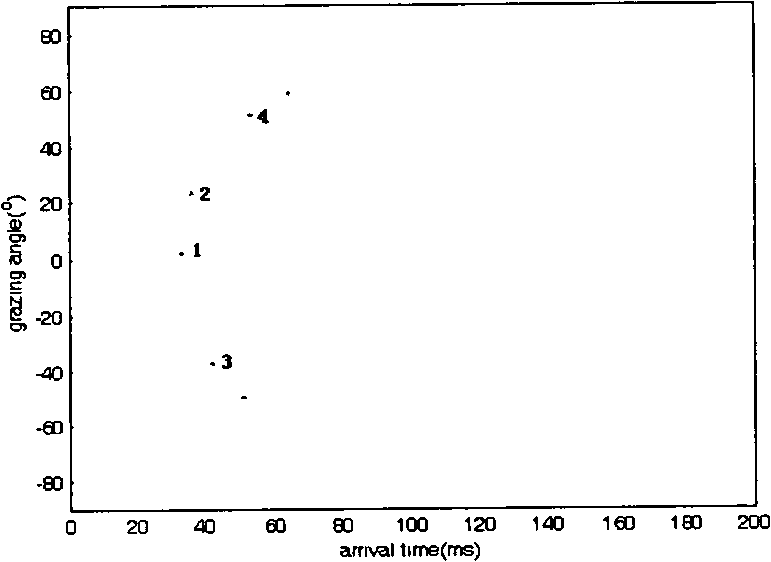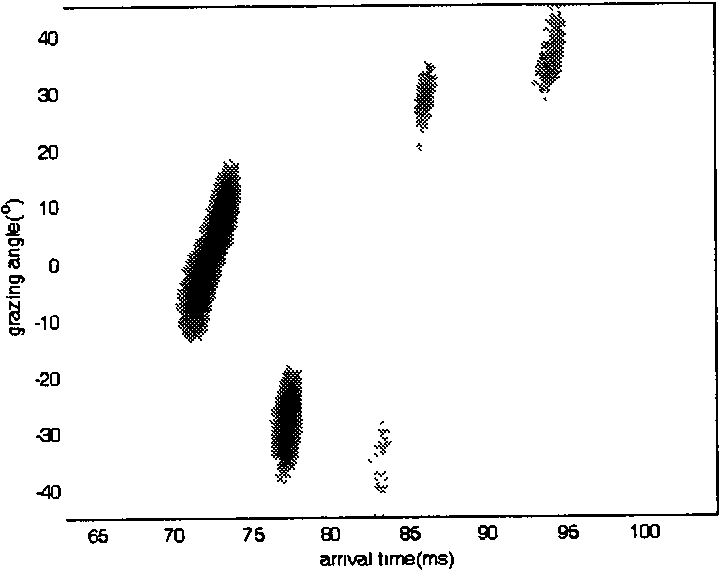Method for measuring submarine density and sound velocity based on multi-path reflection theory
A measurement method and multi-path technology, applied in the direction of measuring device, specific gravity measurement, radio wave measurement system, etc., can solve the problems of large volume, large amount of calculation, high cost, etc.
- Summary
- Abstract
- Description
- Claims
- Application Information
AI Technical Summary
Problems solved by technology
Method used
Image
Examples
Embodiment Construction
[0025] Below in conjunction with accompanying drawing and embodiment the present invention will be further described:
[0026] figure 1 A schematic diagram of a receiver receiving sound waves from a short-distance sound source is given. Four sound rays are drawn in the figure, of which the first sound ray is the direct wave, the second sound ray is the sea surface reflection wave, and the third sound ray is The bottom reflected wave, the fourth sound ray is the sea surface-bottom reflected wave, θ 3 and θ t3 is the incident and refracted grazing angle of the third reflected sound ray, θ 4 and θ t4 is the grazing angle of incidence and refraction of the fourth sound ray.
[0027] figure 2 It is a simulation diagram of the arrival time and angle of the first 4 paths when a 10-meter-deep sound source is used to transmit a signal in a 30-meter-deep ocean to a receiver at a depth of 11.5 meters at a distance of 50 meters. Table 1 is based on the nine seafloor sediment parame...
PUM
 Login to View More
Login to View More Abstract
Description
Claims
Application Information
 Login to View More
Login to View More - R&D
- Intellectual Property
- Life Sciences
- Materials
- Tech Scout
- Unparalleled Data Quality
- Higher Quality Content
- 60% Fewer Hallucinations
Browse by: Latest US Patents, China's latest patents, Technical Efficacy Thesaurus, Application Domain, Technology Topic, Popular Technical Reports.
© 2025 PatSnap. All rights reserved.Legal|Privacy policy|Modern Slavery Act Transparency Statement|Sitemap|About US| Contact US: help@patsnap.com



